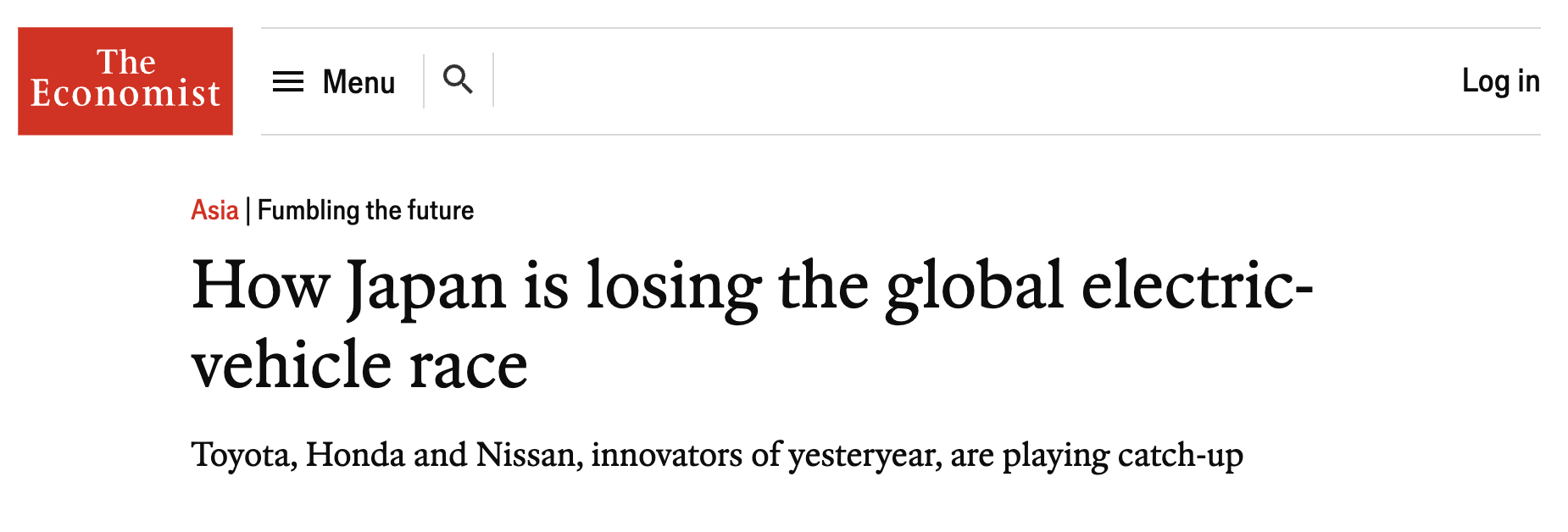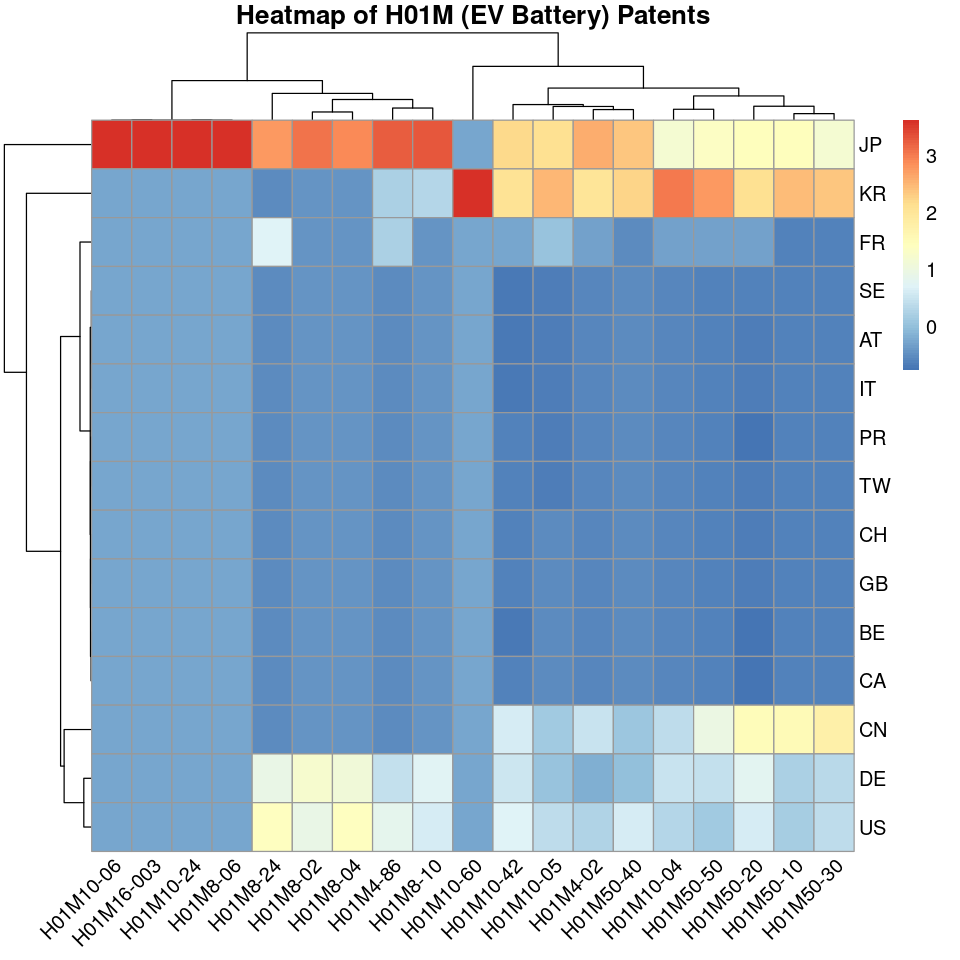Lab 1 - Enter the world of patents
In this lab, we will guide you through the process of
- knowing the basics of patents
- how to analyze the patent data
- where to find the patent data
Basics of patents
The best way to learn the basics of patents is to check one example:
- patent name: Exosome-mediated diagnosis of hepatitis virus infections and diseases
- read the patent via this link
- see how long it takes and how much energy it takes to apply for a patent via this link
- you can search for patents via this link
Analyzing the patent data
In the lab, you will use R to query and analyze the patent data. We will not go through
the process here as we will do it in the lab together. Here I will just show what
you can expect to see in the lab.
Last year, the Economist published an article called How Japan is losing the global electric-vehicle race.

The following paragraph is taken from the article:
Japan also made an early wrong turn with hydrogen, another emergent auto technology with the potential to be carbon-free. Toyota, Japan’s most influential carmaker, bet that using hydrogen fuel-cells would become the leading way to electrify cars. Abe Shinzo, Japan’s prime minister from 2012 to 2020, championed policies to make Japan a “hydrogen society”; in 2015, Toyota delivered its first hydrogen fuel-cell sedan, the Mirai, to Abe himself. While hydrogen may come to play a big role in decarbonising hard-to-electrify sectors, such as steel production or fuelling long-haul trucks, it has so far turned out to make little sense as a technology to electrify light consumer vehicles. Even in Japan, which has built a fair amount of hydrogen-refuelling infrastructure, Toyota has struggled to peddle the pricey Mirai: the company has sold a total of just 7,500 fuel-cell vehicles in its home market.
In the lab, you will be able to analyze the patent data to see if the above paragraph is true or not by producing the following heatmap.

Here is the code to produce the heatmap:
# let's do a heatmap
h01m %>%
.[, .N, by = .(country, cpcCodeB1)] %>%
.[order(-N)] %>%
# only take N >= 100
.[N >= 100] %>%
# get cpc code from cpcCodeB1 by getting characters after cpc/
.[, cpc := str_extract(cpcCodeB1, 'cpc/(.*)')] %>%
# delete 'cpc/' from cpc
.[, cpc := str_replace(cpc, 'cpc/', '')] %>%
# drop cpcCodeB1
.[, cpcCodeB1 := NULL] %>%
# dcast
dcast(country ~ cpc, value.var = 'N', fill = 0) %>%
as.data.frame() -> h01m_heatmap_df
# set rownames
rownames(h01m_heatmap_df) <- h01m_heatmap_df$country
# delete country column
h01m_heatmap_df <- h01m_heatmap_df[, -1]
# options(repr.plot.width=8, repr.plot.height=8, dpi=400)
h01m_heatmap_df %>%
scale() %>%
pheatmap(main="Heatmap of H01M (EV Battery) Patents", angle_col = 45,
fontsize = 12)
Where to find the patent data
You can find the patent data from the following sources:
However, if you are planning to do research on patents, I would recommend you to use the dataset from OECD. Please read this article to know how to download the patent data from OECD and how to analyze it.